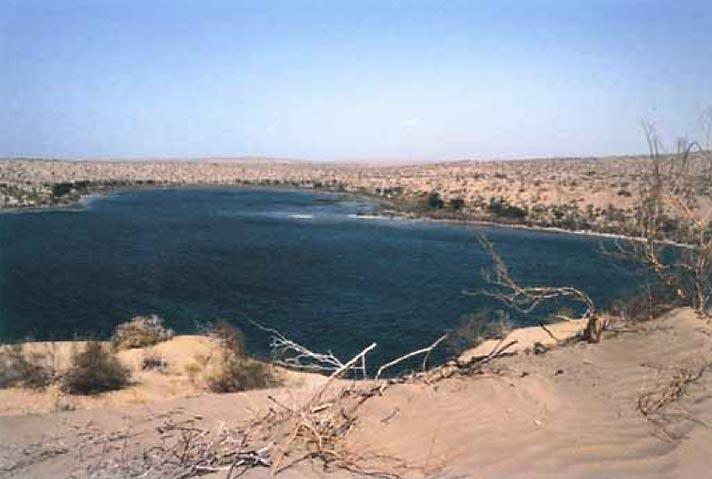Above: The salt-lakes of Khat Sim, Sindh
Some 7,000 years before the Indus civilization, there were flourishing communities in the area explains Dr. Biagi of Foscari Univerisity in Venice, Italy.
Abstract
The discovery of Mesolithic sites in Upper and Lower Sindh is of fundamental importance for the study of the Early Holocene communities that inhabited the territory around the beginning of the Holocene. Microlithic chipped stone assemblages have been discovered in two distinct regions: the Thar Desert of Upper Sindh, and along the coast of the Arabian Sea and on the terraces of the rivers that flow into it, around the Karachi Gulf (Lower Sindh).
The variable characteristics of the chipped stone assemblages seem to indicate different chronological periods of habitation and models of exploitation of the natural resources. Due to the rarity of organic material, only one Lower Sindh site has been so far radiocarbon-dated. The typological analysis of the assemblages, currently under way, will lead to a more detailed definition of the periods represented at the different sites. At present the only parallels can be extended to the microlithic sites of Rajastan and Gujarat, in India, a few of which consist of radiocarbon-dated, stratified settlements.

